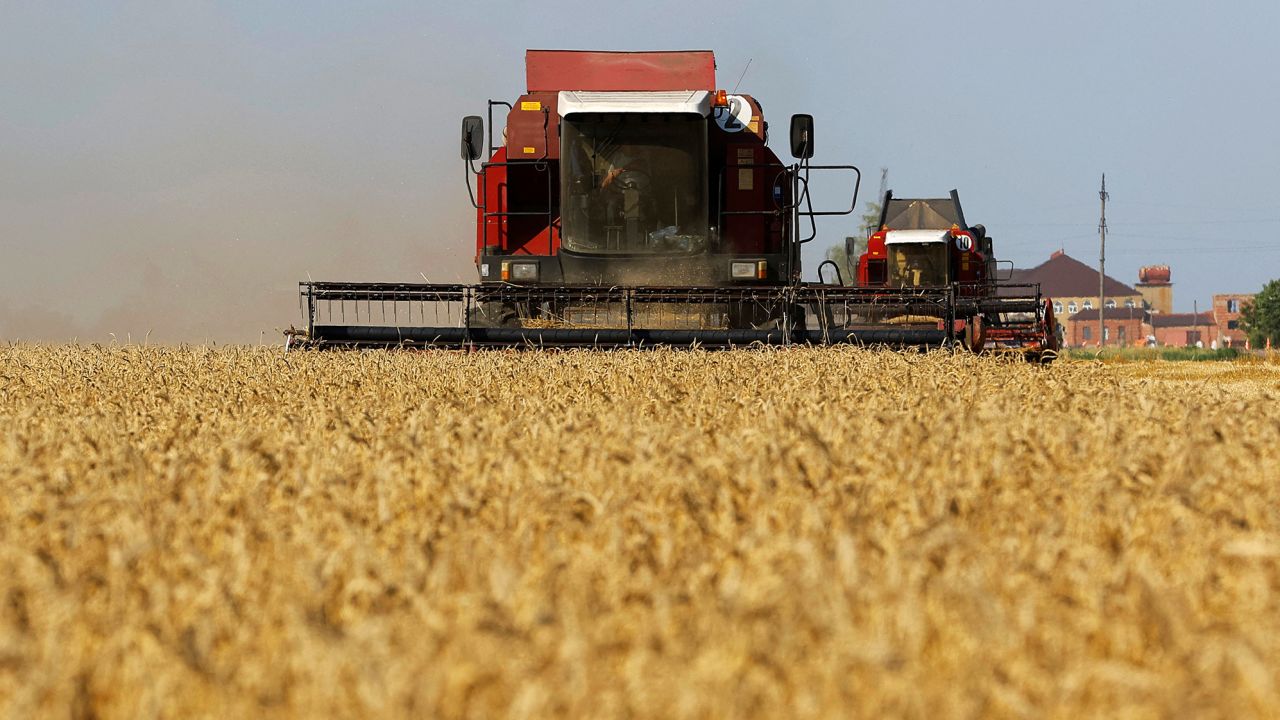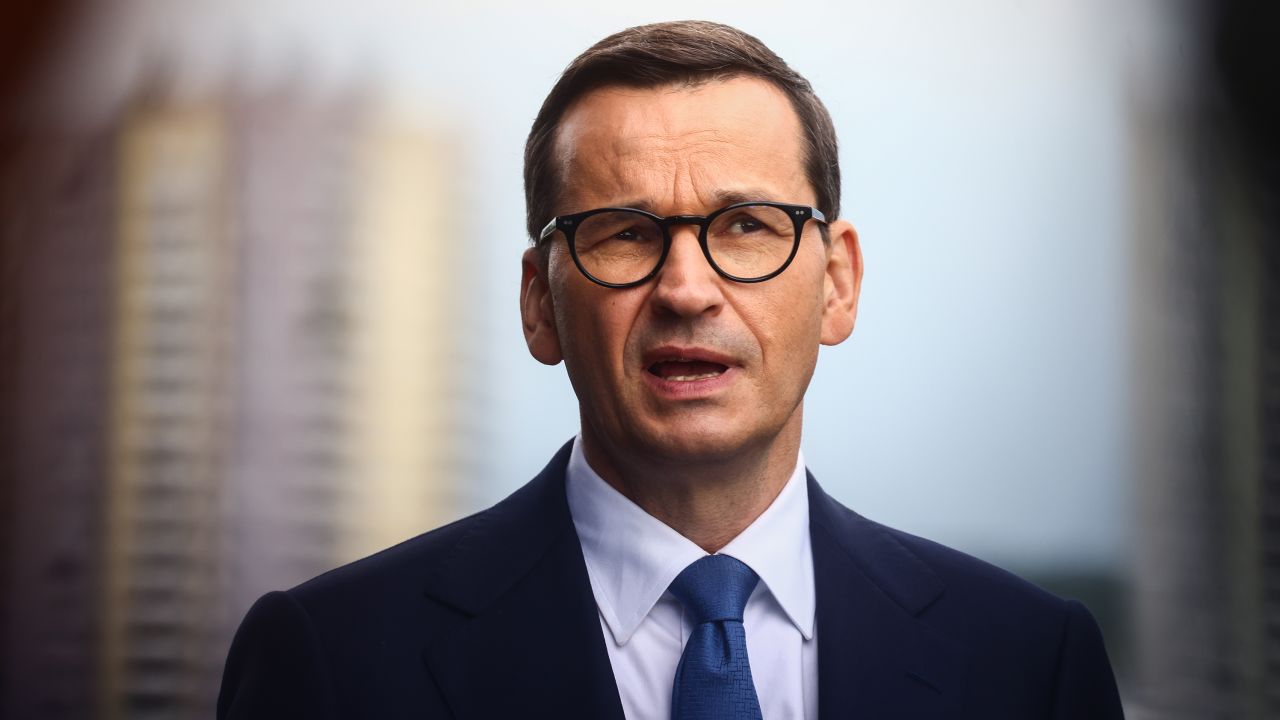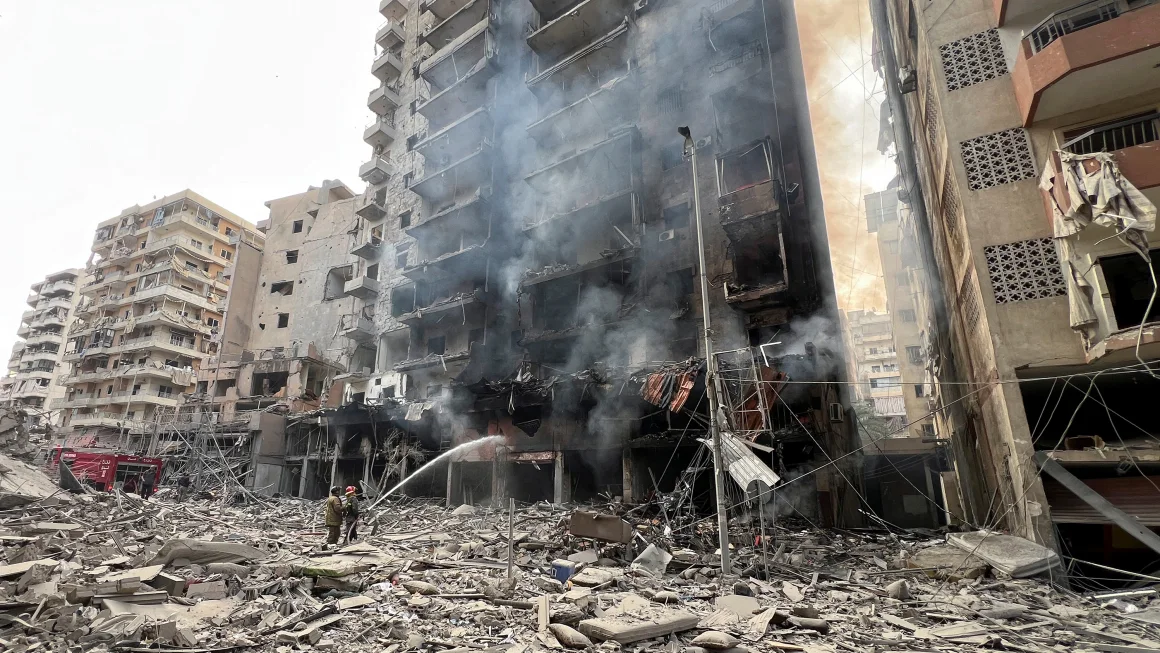CNN — One of Ukraine’s closest and most vocal allies has now said it will stop sending arms to Kyiv, a major reversal that threatens to upend Europe’s strategic relationship with the country as it wages a counteroffensive against Russia.
Poland’s decision was both sudden and predictable, coming after months of tensions over a temporary ban on Ukrainian grain imports to a number of European Union countries.
It also follows a pattern of increasingly confrontational behavior towards Kyiv from Poland’s government, just weeks before a tight general election.
And it could have implications for Ukraine’s attempts to push Russian forces out of the country’s southern regions, in an ongoing assault that has been making slow and grinding progress.
Here’s what you need to know:
What has Poland announced?
“We no longer transfer weapons to Ukraine because we are now arming Poland,” Polish Prime Minister Mateusz Morawiecki said in a blunt social media statement on Wednesday.
Morawiecki added in a television interview that Poland will now focus on supplying “the most modern weapons” for its own purposes, state news agency PAP reported. “If you want to defend yourself you have to have something to defend with,” the prime minister said.
It marks a major change in policy. In the spring, Poland became the first NATO country to send fighter jets to Ukraine – months ahead of the United States, which only agreed last month to approve the transfer of F-16 jets, pending the completion of training by Ukrainian forces.
It has also previously sent more than 200 Soviet-style tanks to Ukraine, and most Western military equipment and other supplies reach Ukrainian forces by crossing Polish territory.
Poland will now only carry out the supplies of ammunition and weapons to Kyiv that were agreed before Warsaw made its decision to stop shipments, government spokesman Piotr Muller said Thursday, according to PAP.
Muller emphasized that Ukraine has made a series of “absolutely unacceptable statements and diplomatic gestures” and that “Poland does not accept this type of unjustified actions,” PAP reported.
Ukraine seemingly moved to ease the rift on Thursday. Kyiv’s minister of agrarian policy said he had spoken with his Polish counterpart and issued a statement saying the pair “discussed the situation and Ukraine’s proposal to resolve it, and agreed to find a solution that takes into account the interests of both countries.”
It also agreed to establish a grain trade system with Slovakia that would enable a ban on imports of Ukrainian grain to be lifted, Slovakia’s agriculture ministry said on Thursday.
How did we get here?
Pressure has been building for months over a ban on Ukrainian grain, initially put in place earlier this year by several EU nations to protect the livelihood of local farmers worried about being undercut by the low price of Ukrainian grain.
Last week, the EU announced plans to suspend the rule. But three nations – Poland, Hungary and Slovakia – said they intended to defy the change and keep the restrictions in place. It prompted protests from Ukraine, which this week filed lawsuits against all three countries over the issue.
Ukraine, often called the “breadbasket of Europe” due to the vast quantities of grain it produces, had its Black Sea ports blockaded by Russia following its full-scale invasion in February 2022.
Fearing that the situation was “threatening global food security,” the European Commission set up what it called “solidarity lanes” in May to facilitate exports, and temporarily eliminated all duties and quotas on Ukraine’s exports, allowing a glut of cheap Ukrainian grain to flow into the continent.

Anger in Poland has been simmering since the spring, when farmers led demonstrations against the moves. But they erupted once again in recent days, after the decision of the three nations to ignore the removal of the ban.
In a swipe against the trio on Wednesday, Ukrainian President Volodymyr Zelensky told the UN General Assembly in New York that “it is alarming to see how some in Europe, some of our friends in Europe, play out solidarity in a political theater – making a thriller from the grain.”
Zelensky added that the nations involved “may seem to play their own role but in fact they are helping set the stage to a Moscow actor.” His comments sparked immediate condemnation from Poland, with the foreign ministry summoning the Ukrainian ambassador to convey its “strong protest.”
A tight election looms
Poland’s initial response to the war on Ukraine earned its populist government a rare swelling of goodwill from across Europe, and made it a major player in the Western response to Russia’s aggression.
The country has taken in more than 1.5 million Ukrainian refugees and allowed 15 million to cross its borders to flee the conflict. The two countries shared a decades-old suspicion of Moscow and Warsaw had warned for years of the pitfalls of buying Russian energy, which melded their relationship in the initial phases of the war.
But tension have frayed in recent months, exacerbated by a pivotal election.
Poland’s populist ruling party, Law and Justice (PiS), are preparing for a vote on October 15 which opinion polls suggest could result in them losing their parliamentary majority. They are particularly suffering in their stronghold rural regions in eastern Poland, where agriculture is an important economic pillar.

PiS is losing a chunk of its typical voter base to the Confederation party, a historically far-right group that has been rallying against the costs of Warsaw’s military aid to Kyiv and complained that Ukraine’s plight has become a greater priority for the government than that of Polish people.
In response, PiS has seemingly toned down its support for Kyiv in recent months and shown willingness to take on a more combative stance. In August, Warsaw summoned the Ukrainian ambassador to Poland after a Polish foreign policy adviser accused Kyiv of being ungrateful for Poland’s support in exporting its grain.
What does this mean for the war?
If a solution is not found, Kyiv will have concerns that Poland’s decision to stop sending weapons will reverberate through Europe.
Warsaw has been among the most eager nations to bolster Kyiv’s arsenal since the initial days of the full-scale war, and has shown a willingness to push other European powers and the US into joining them.
In January, when Germany agonized over whether to provide Leopard 2 battle tanks to Kyiv’s troops, Poland took a leading role in bringing together a European coalition that gave Berlin enough leeway to make the move.
For days, Polish officials talked up publicly and privately their desire to get the high-tech combat vehicles onto the front lines, and insisted they would do so whether or not fellow nations came with them.
Kyiv and its allies will have concerns that if Warsaw takes an new attitude to future arms shipments, other hesitant European countries will feel less pressure to also donate supplies.
The urgency of the war to Poland has also slipped over the course of year. Poles had long warned that their country was in the crosshairs of Russia’s imperial designs, and Moscow’s invasion spiked fears that Poland would be a future target.
But with the war now bogged down in Ukraine’s east and Moscow’s army suffering serious deficiencies in manpower and leadership, the prospect of Russian President Vladimir Putin attacking a NATO country such as Poland appears slim.
The ongoing Ukraine counteroffensive has meanwhile benefited from Western support and supplies, but Kyiv has pushed for more to see it through what is likely to be a lengthy and stubborn conflict. It will worry that Poland’s decision could cause a domino effect that leaves future shipments in jeopardy.
CNN’s Antonia Mortensen, Sharon Braithwaite, Radina Gigova, Mitchell McCluskey, Mariya Knight, Olga Voitovych and Tim Lister contributed reporting


